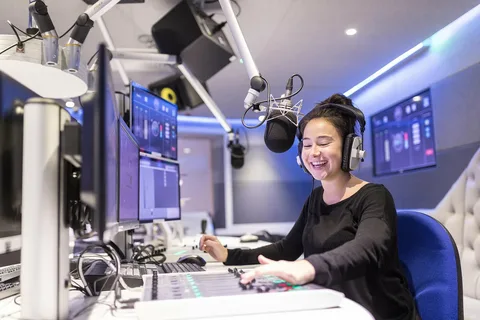The Rise of Internet Broadcasting: Transforming Media Consumption

In recent years, internet broadcasting has revolutionized the way we consume media, enabling a diverse range of content creators to connect with global audiences. From live streaming events to on-demand podcasts, the shift from traditional broadcasting to internet platforms has reshaped the landscape of entertainment, information, and communication.
The Evolution of Broadcasting
Traditional broadcasting, primarily through television and radio, has long been a staple of media consumption. However, with the advent of the internet, a new paradigm emerged. The early 2000s saw the rise of online streaming services and platforms, allowing users to access content anytime and anywhere.
The launch of platforms like YouTube in 2005 marked a significant turning point, democratizing content creation. Suddenly, anyone with a camera and an internet connection could share their voice, leading to the birth of a new generation of content creators and influencers.
Types of Internet Broadcasting
-
Live Streaming: Platforms such as Twitch, Facebook Live, and Instagram Live have popularized real-time broadcasting, enabling users to share experiences as they happen. This format is particularly popular among gamers, musicians, and event organizers, fostering community interaction through live chats and comments.
-
Podcasts: The podcasting boom has transformed audio broadcasting. With millions of podcasts available on various platforms, listeners can explore topics ranging from true crime to business. This format allows for in-depth discussions and storytelling, catering to niche interests and creating dedicated fanbases.
-
Webinars and Online Courses: Educational institutions and professionals are leveraging internet broadcasting for training and workshops. Webinars allow experts to share knowledge with a global audience, making learning more accessible and interactive.
-
Streaming Services: Platforms like Netflix, Hulu, and Amazon Prime Video have redefined how we consume television and film. With on-demand access to a vast library of content, viewers can watch what they want, when they want, without the constraints of traditional schedules.
The Impact of Internet Broadcasting
The rise of internet broadcasting has profound implications for both creators and consumers:
-
Accessibility: Internet broadcasting has lowered barriers to entry for content creation. Aspiring artists, educators, and entrepreneurs can share their work without the need for traditional media gatekeepers. This democratization fosters diversity in voices and perspectives.
-
Global Reach: Content can now reach audiences around the world instantly. Creators can build international followings, leading to a more interconnected global community.
-
Engagement: The interactive nature of internet broadcasting encourages audience participation. Viewers can engage with creators in real time, providing feedback and fostering a sense of belonging.
-
Advertising and Monetization: With the rise of influencer marketing, brands are increasingly partnering with online content creators to reach targeted audiences. Creators can monetize their content through sponsorships, subscriptions, and merchandise, creating sustainable income streams.
Challenges and Considerations
Despite its many benefits, internet broadcasting also presents challenges:
-
Quality Control: With an abundance of content available, distinguishing high-quality productions from poorly made ones can be difficult for consumers. This has led to the rise of platforms that curate content to improve discovery.
-
Misinformation: The ease of publishing online raises concerns about the spread of false information. Content creators must be vigilant about fact-checking and responsible reporting to maintain credibility.
-
Regulation and Copyright: As internet broadcasting grows, issues related to copyright infringement and content regulation become more complex. Content creators must navigate these challenges to protect their work and comply with legal standards.
The Future of Internet Broadcasting
The future of internet broadcasting looks promising, with advancements in technology shaping its evolution. Innovations like virtual reality (VR) and augmented reality (AR) are beginning to create immersive viewing experiences, while artificial intelligence (AI) is streamlining content recommendations and enhancing personalization.
As 5G technology expands, the potential for high-quality, lag-free streaming will further enhance the viewer experience, paving the way for even more interactive and engaging content.
Conclusion
Internet broadcasting has fundamentally changed how we create and consume media. By breaking down barriers and fostering diverse voices, it has transformed the media landscape into a more inclusive and dynamic space. As technology continues to advance, the possibilities for innovation in internet broadcasting are limitless, promising an exciting future for creators and audiences alike.
- Arts
- Business
- Computers
- Games
- Health
- Home
- Kids and Teens
- Money
- News
- Recreation
- Reference
- Regional
- Science
- Shopping
- Society
- Sports
- Бизнес
- Деньги
- Дом
- Досуг
- Здоровье
- Игры
- Искусство
- Источники информации
- Компьютеры
- Наука
- Новости и СМИ
- Общество
- Покупки
- Спорт
- Страны и регионы
- World


